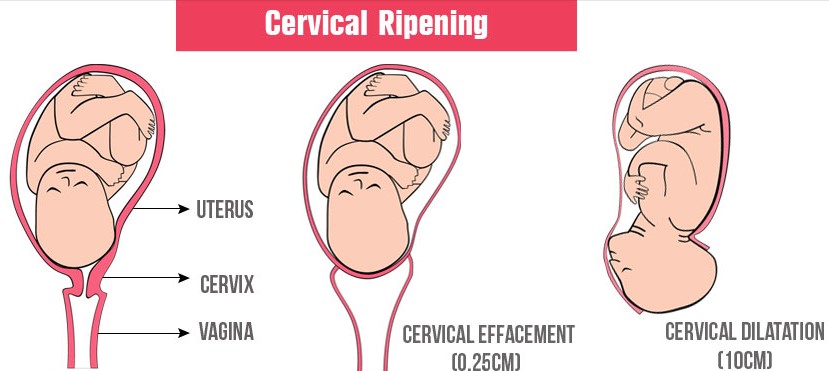If looking for natural or vaginal birthing options, then cervical ripening, effacement and dilation become an important factor to look at. In many cases, cervical ripening or thinning happens naturally and may even begin weeks before the due date. However, in other cases, this may occur just before labor or may even require medical intervention.
What is cervical ripening?
The cervix is closed during the entire pregnancy. As coming near the due date, the cervix undergoes changes and begins to soften and become thinner to prepare for childbirth. This is known as cervical ripening.
How is cervical ripening done?
In cases where the process does not happen naturally, medical intervention may be required for the procedure. This can happen if the doctor feels that it is in the best interest of the baby and the mother. This usually happens when there are certain health concerns for the mother and baby or overdue by more than a week. When the procedure to soften the cervix is performed, it may not only help to get into natural labor (without medical induction) but sometimes, it may also shorten the duration of labor, as well.
Can you encourage cervical ripening at home?
Birthing ball
Rotating, bouncing, or even rocking the hips on a birthing ball can not only help in opening up the cervix but may also aid in the dilation of the cervix.
Working on body alignment
Pregnant women tend to change the posture as the belly grows. Keeping the weight on the ankles and not stooping or slouching while sitting, can prove to be of great help in opening up the cervix.
Keeping the feet parallel
Though most pregnant women stand with the legs apart, keeping the toes in a parallel position while standing may prove to be helpful in separating the sitz bones and thus opening up the cervix, too.
Walking
It is a great way to let gravity do its job in opening up the cervix. It is a great exercise and it helps the baby to gently move down the cervix and aids dilation, too.
Having sex
It also helps in ripening the cervix, as the prostaglandins in the semen help in softening the cervix. Also, having an orgasm during sex can further lead to uterine contractions.
Methods used in a hospital
Cervical ripening drugs
The doctor may use cervical ripening drugs like misoprostol cervical ripening drug or drugs that have prostaglandins, for softening and dilating the cervix. These medicines can either be given orally or placed directly in the cervix. These drugs may make the cervix 2 to 3 cm dilated and in some cases, women may also go into labor. The medicines used to soften the cervix are usually considered safe and are tolerated well by most women.
Mechanical ripening of the cervix
It means ripening the cervix forcefully. This procedure requires inserting a foley catheter with a very small balloon in the cervix and then the balloon is inflated slowly. This makes the cervix open up. Sometimes, the cervix is dilated by using the finger in a process known as membrane stripping. The membrane that is attached to the uterine wall is separated using fingers, though it can be a painful procedure, it works in most cases.
The combination method
Sometimes the doctor may feel the need to use both methods simultaneously for cervical ripening. According to some studies, using a combination of both the above-mentioned methods is often considered safe.
Risks of cervical ripening
Cervical ripening is a very common procedure and often does not cause any risks. Sometimes, the contractions can come too fast after induction of cervical ripening and in some unlikely cases, where the contractions are for 90 seconds or longer, fetal distress could become a major threat. Under such situations, the doctor may recommend an emergency cesarean delivery.
Tips to prepare for a hospital procedure
In most cases, the procedure takes place in an opd. However, sometimes it may result in labor and thus it will be a good idea to pack a bag with the overnight essentials.
On the day of the procedure, have a light breakfast that can include toast or juice. For lunch, make a sandwich, soup or salad. However, take regular meals after going back home.
When to call a doctor?
- In case the amniotic sac or water breaks
- Notice any excessive increase or decrease in the baby’s movements
- If have any kind of vaginal bleeding
- The contractions for more than 90 seconds
- If experience 3 or more contractions in a span of 10 minutes
Conclusion
Cervical ripening is a natural process and may sometimes begin several weeks before the actual due date. However, it is completely normal for the cervix to remain closed until going into labor. In some cases, the doctor may feel the need to conduct a cervical ripening procedure, and will be a good idea to talk to the doctor if have any concerns about the cervical ripening.
References-
- https://www.ncbi.nlm.nih.gov/pmc/articles/PMC6205862/
- Cervical ripening | Greenville ob/GYN













